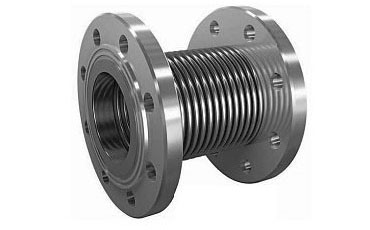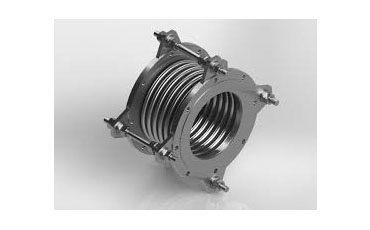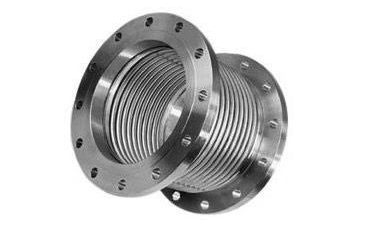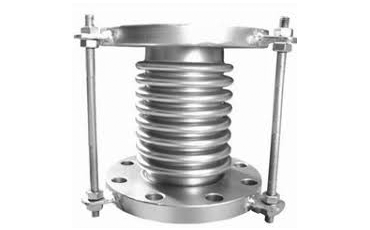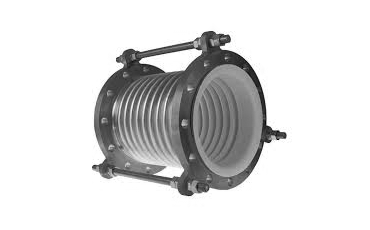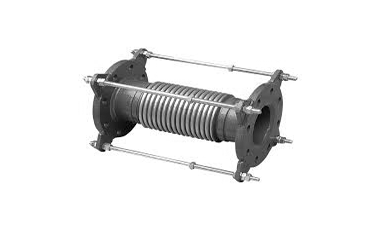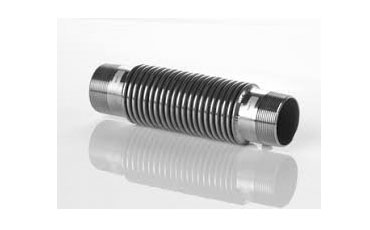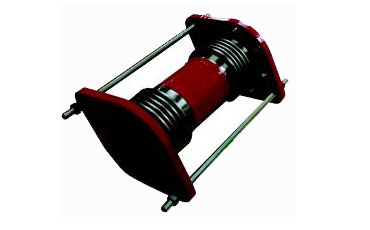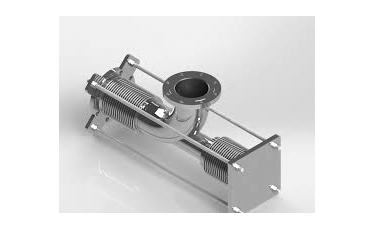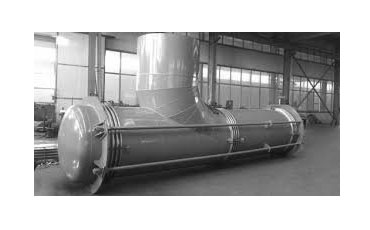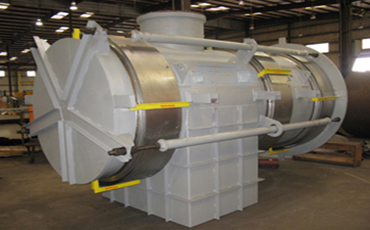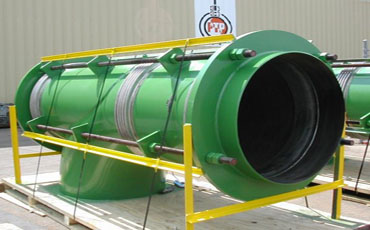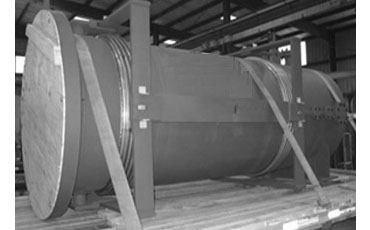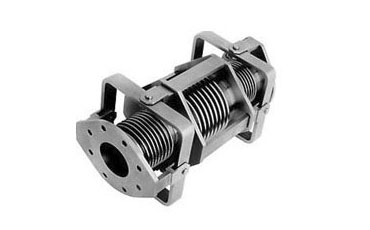Bellow Expansion Joints
Bellow expansion joints, also known as bellows or simply expansion joints, are vital components in piping systems. They are specially designed to absorb mechanical and thermal movements, preventing stress and damage to the system. These joints consist of a bellows-like structure made from various materials such as metal or rubber, providing flexibility and allowing for expansion, contraction, and lateral movement.
Bellow expansion joints find applications across industries, including petrochemical, HVAC, power generation, and manufacturing. Their ability to mitigate vibration, noise, and the effects of thermal expansion makes them indispensable for maintaining the integrity and longevity of pipelines and duct systems. By absorbing these stresses, bellow expansion joints contribute to the overall efficiency and safety of industrial processes.
If we talk about the bellow expansion joint industrial engineering and fluid transportation, the efficient and safe conveyance of liquids, gases, and other substances through pipelines is of paramount importance. Piping systems are the lifelines of numerous industries, including petrochemical, oil and gas, power generation, pharmaceuticals, and more.
However, the inherent dynamics of these systems, such as thermal expansion, vibration, and pressure fluctuations, can exert substantial stress on pipelines, potentially leading to leaks, fatigue, and even catastrophic failures. To address these challenges, engineers have developed various solutions, and one such critical innovation is the below expansion joint.
Metallic Expansion Joints
Metallic Expansion Joints are strategically placed within piping and duct systems to safeguard against thermal expansion, vibration, pressure thrust, and mechanical forces that could lead to damage.
These joints come in various designs, utilizing a wide array of materials, from basic convoluted bellows found in petroleum refineries to advanced options crafted from stainless steels and high-grade nickel alloy steels.
Numerous factors contribute to the stress experienced by pipes connecting two points, including internal and external pressure at working temperatures, the weight of the pipe and its components, movement induced by external restraints, and thermal expansion. These factors collectively impact the integrity and performance of the piping system.
Stainless Steel Expansion Joints
Stainless steel expansion joints have gained prominence for numerous compelling reasons. Chief among these is the use of austenitic stainless steels, the most widely employed materials for crafting metal bellows and expansion joints. These stainless steel expansion joints offer a well-balanced combination of attributes, including strength, corrosion resistance, and cost-effectiveness.
Within the realm of stainless steel, several standard grades find frequent application in expansion joints. These include SS304/304L, SS316/316L, and SS321, each selected based on specific service conditions and requirements.
Choosing the right stainless steel grade for expansion joints hinges on careful consideration of the intended service conditions. For instance, when dealing with high-temperature applications, SS321 is the preferred choice due to its superior resistance to high-temperature corrosion. On the other hand, SS316 is the grade of choice for a broad spectrum of applications, ranging from cryogenic temperatures to 800F service, thanks to its versatility and corrosion resistance.
This meticulous selection of stainless steel grades ensures that expansion joints not only provide structural integrity but also maintain optimal performance and longevity under varying operating conditions. It’s a testament to the versatility and adaptability of stainless steel expansion joints in addressing diverse industrial needs.
Rubber Expansion Joints
Rubber Expansion Joints serve as flexible connectors, incorporating natural or synthetic elastomers and being reinforced with metallic materials. They are specifically engineered to alleviate stress within piping systems caused by fluctuations in temperature.
In situations where the piping system cannot inherently accommodate such movements, expansion joints provide an optimal solution. Rubber expansion joints effectively compensate for lateral, torsional, and angular movements, thereby preventing damage and minimizing downtime in industrial operations.
The unique construction of rubber joints addresses various common challenges, including vibration, noise, shock, corrosion, abrasion, excessive stresses, load stress, and equipment movement. Moreover, they effectively counteract issues related to vibration, pressure pulsation, and movement within a piping system, ensuring the overall reliability and longevity of the system.
Understanding Bellow Expansion Joints
A bellow expansion joint is a fundamental component used to accommodate axial, lateral, and angular movements in pipelines while maintaining the integrity of the system. Comprising a series of convolutions, or bellows, usually made from metal or synthetic materials, these expansion joints provide flexibility, absorb vibrations, and compensate for thermal expansion and contraction. They are designed to extend the lifespan of piping systems, reduce maintenance costs, and enhance overall operational reliability.
Bellow expansion joints, often referred to simply as bellows, serve as integral components within piping systems, offering a crucial function in preserving system integrity. These joints consist of a series of convolutions, typically constructed from materials like metal or synthetic compounds. Their primary purpose is to accommodate various types of movement in pipelines while ensuring the system’s robustness.
Bellow expansion joints play a multifaceted role in pipeline applications. They are engineered to provide flexibility, enabling axial, lateral, and angular movements while effectively absorbing vibrations. Furthermore, these joints are pivotal in compensating for the inevitable thermal expansion and contraction that occurs within pipelines.
The significance of bellow expansion joints extends beyond mere convenience. By mitigating stress and strain, they contribute to extending the lifespan of piping systems, reducing maintenance requirements, and ultimately enhancing the overall reliability and efficiency of industrial operations. In essence, these components serve as vital connectors, enabling the seamless function of complex piping systems across various industries.
Key Benefits of Bellow Expansion Joints
- Flexibility and Movement Absorption: Bellow expansion joints excel in absorbing the movements that occur within a piping system. Whether it’s due to thermal variations, ground settlement, or equipment vibrations, these joints flex and extend to accommodate such changes without imposing stress on the piping or its connected components.
- Stress Reduction: The ability to absorb movement and vibrations translates to a significant reduction in stress at connection points and pipe walls. By minimizing stress, bellow expansion joints mitigate the risk of fatigue, cracks, and premature failure, thereby enhancing the operational lifespan of the system.
- Corrosion Resistance: Bellow expansion joints can be manufactured from materials that are highly resistant to corrosion and harsh chemicals. This makes them suitable for use in corrosive environments, such as those found in chemical processing plants and offshore oil platforms.
- Noise and Vibration Dampening: Vibrations and noise resulting from fluid flow or equipment operation can be detrimental to both the environment and personnel. Bellow expansion joints act as effective dampeners, reducing noise levels and attenuating vibrations that could otherwise impact the system’s stability.
- Easy Installation and Maintenance: These expansion joints are designed with ease of installation in mind, often requiring minimal adjustments or modifications to existing piping systems. This ease of installation extends to maintenance activities, where routine inspections and replacements can be conducted without major disruptions to operations.
- Versatility: Bellow expansion joints can be customized to suit specific application requirements. Engineers can select the appropriate material, size, and design based on factors such as temperature, pressure, fluid type, and environmental conditions.
- Cost-Effectiveness: While the initial investment in bellow expansion joints may be higher compared to traditional alternatives, the long-term benefits far outweigh the costs. Reduced downtime, lower maintenance expenses, and prevention of costly system failures contribute to their overall cost-effectiveness.
Applications of Bellow Expansion Joints
Bellow expansion joints find their utility across a wide spectrum of industries and applications:
- Petrochemical and Oil Refining: In the petrochemical sector, where the handling of volatile and corrosive fluids is commonplace, bellow expansion joints play a crucial role in maintaining the integrity of piping systems. They enable the safe and efficient transfer of materials while withstanding extreme temperatures and aggressive chemicals.
- Power Generation: Power plants, whether thermal, nuclear, or renewable, rely on intricate networks of pipes to transport steam, coolant, and other fluids. Bellow expansion joints are indispensable in accommodating thermal expansion and contraction in these systems, ensuring continuous operation and preventing leaks.
- HVAC Systems: Heating, ventilation, and air conditioning systems require precise fluid distribution. Bellow expansion joints help manage thermal fluctuations and mechanical vibrations, promoting efficient operation and occupant comfort.
- Marine and Offshore Industry: The harsh marine environment exposes piping systems to saltwater, constant motion, and extreme weather conditions. Bellow expansion joints enable reliable fluid transfer in marine applications, such as ballast systems, cooling circuits, and oil transfer lines.
- Pharmaceutical and Food Processing: Industries with stringent hygiene and cleanliness requirements, like pharmaceuticals and food processing, benefit from the corrosion-resistant and easily cleanable nature of bellow expansion joints. They maintain the purity of fluid transport, crucial for compliance and consumer safety.
- Aerospace and Defense: In aerospace applications, bellow expansion joints are employed in fuel systems, hydraulic systems, and various other fluid-carrying systems, ensuring reliable performance even under the stresses of takeoff, flight, and landing.
Design Considerations and Types of Bellow Expansion Joints
Engineers must take several factors into account when designing or selecting bellow expansion joints:
- Material Selection: The choice of material depends on the operating conditions, including temperature, pressure, fluid compatibility, and environmental factors. Common materials include stainless steel, Inconel, Hastelloy, PTFE (polytetrafluoroethylene), and more.
- Bellows Configuration: The number of convolutions in the bellows impacts its flexibility and movement absorption capacity. Single-ply, multiply, and even custom-designed configurations are available to suit specific requirements.
- End Connections: Bellow expansion joints can be fitted with various end connections, such as flanges, weld ends, or threaded connections. The selection should align with the piping system’s requirements and installation constraints.
- Size and Dimensions: Proper sizing ensures optimal performance. Factors like pipe diameter, length, and overall system design influence the dimensions of the expansion joint.
- Movement Capability: Engineers must accurately assess the range of movement expected in the piping system, including axial, lateral, and angular movements, to select an expansion joint with the appropriate flexibility.
Material Selection for Expansion Joints
At Bellows Systems, we take pride in our diverse selection of materials for crafting metal expansion joints. Our choice of materials is driven by the specific requirements of each application, taking into account factors like physical properties, resistance to corrosion, and cyclic fatigue.
Among the most commonly used materials for our metal bellows and expansion joints are various grades of austenitic stainless steels. These alloys offer excellent corrosion resistance and durability. Additionally, we offer a wide array of specialty materials to cater to unique demands, including Inconel, Hastelloy, Monel, high Nickel alloys, Cobalt alloys, Titanium, Aluminum, brass, copper alloys, and many more.
The versatility in material selection enables us to design expansion joints suitable for a broad spectrum of service conditions. Our expertise extends to crafting bellows capable of withstanding temperatures ranging from -330˚F (cryogenic) to 1800˚F and handling pressure ratings from full vacuum to 3,000 Psi. This comprehensive range of materials empowers us to provide tailored solutions that meet the diverse needs of our customers across various industries.
Installation and Maintenance
Correct installation and regular maintenance are essential for the longevity and effectiveness of bellow expansion joints:
- Proper Alignment: During installation, careful alignment and positioning of the expansion joint relative to the piping are crucial to ensure it functions as intended.
- Support and Anchoring: Adequate support and anchoring of the expansion joint prevent excessive movement and stress. Improper support can lead to premature failure.
- Inspections: Routine inspections should be conducted to identify signs of wear, corrosion, or damage. Early detection allows for timely replacement and prevents potential disruptions.
- Replacement: When an expansion joint shows signs of deterioration or failure, prompt replacement is necessary to avoid system downtime and potential hazards.
Challenges and Future Developments
While below expansion joints offer remarkable benefits, challenges persist. High-temperature applications, extreme pressures, and aggressive chemicals can still pose difficulties. Researchers and engineers continue to push the boundaries, developing advanced materials, innovative designs, and predictive maintenance techniques to address these challenges.
Bellow expansion joints stand as a testament to engineering innovation, providing a robust solution to the complex dynamics inherent in industrial piping systems. Their ability to absorb movements, dampen vibrations, and compensate for thermal expansion is essential for maintaining the integrity, safety, and efficiency of fluid transportation across a diverse range of industries. As technology evolves and challenges emerge, bellow expansion joints will likely continue to evolve, shaping the future of reliable and resilient piping systems.
Single Expansion Bellows
Read About Single Expansion Bellows
Single expansion joint is simply a bellows element with end connections. A flexible element either with flange end or Butt Weld End to absorb any combination of three basic movements. I.e. Axial movement, Lateral deflection and Angular rotation along the axis of the pipe line. Metallic bellows are normally applied in the pipe line and Ducts where high temp & high pressure are present.These are basically to accommodate or absorb the thermal movements of the ducts or pipes due to high temperature and pressure.
YEC Single Expansion Bellows are specially designed to take care of these kinds of movements and also capable to absorb duct or pipe misalignment in all three directions viz Axial, Lateral & Angular or combination of all three.
YEC has very unique range Single Expansion Joint.
It should be always remembered that thermal expansion can always occur in multi direction like Axial, Lateral & Angular.
Axial Bellows do not control the movement of the pipes and in case the piping analysis indicates that the expansion joint should accept axial compression, then in that case the piping must be guided and constrained so that only that movement occurs.
- Absorbs small amounts of axial, lateral, and angular movements
- Deflect in any direction
- Most economical
- Must be guided
- Requires main and directional anchors
- Size available – 15 NB to 4000 NB
Universal Expansion Bellows
Read About Universal Expansion Bellows
This type of pipe expansion joint is really a combination of several types. Its purpose is to retain and balance the pressure thrust so that main anchoring of the pipe or adjacent equipment is not required, and forces and movements on attachment flanges of delicate equipment, such as turbines, are kept to acceptably low levels. The deflections to be accepted are handled by the proper type of pipe expansion joint, which normally, is a tied universal type to accept lateral movements. However, the pressure balanced elbow is usually required because axial deflections are also present. In order to accept these movements, a bellows is added beyond the elbow with the same cross-sectional area as the ones in the universal section. All of the lateral deflection is absorbed by the universal end, and there is no lateral deflection imposed on the balancing end. Therefore, the balancing bellows is almost always a single bellows type.
- Absorbs axial and lateral movements
- Eliminates main anchors
- Minimum guiding required
- Pressure forces remain in balance
- No volume change
- Size available – 25 NB to 3000 NB
Balance pressure thrust remains constant
Gimbal Type Bellows
Read About Gimbal Type Bellows
The Gimbal SS Bellow is basically same as the hinge type, except that instead of being limited to deflection in only one plane gimbal Expansion Joints are used to absorb angular rotation in any plane, using two pairs of hinges attached to a common floating gimbal ring. Gimbal systems generally consist of two gimbal expansion joints or two gimbal and one hinged expansion joint/bellow.
The advantages of this type of construction is it provides a close control over the movement imposed up on the bellows and also supports the dead weight of the pipe.
In addition, the wind and shear loads are also taken care of by the gimbal structure. Gimbal bellows are designed to absorb the full pressure thrust load of the expansion joint and thus guard the adjacent equipment from damage due to thrust loading.
- Absorbs angular rotation
- Eliminates pressure thrust forces
- Transmits shear and wind loads
- Supports dead weight
- Prevents torsion on bellows
- No main anchors required
- Minimum guiding required
- Low forces on piping system
- Size available – 25 NB to 3000 NB
Why Choose Yogiraj Engineering for Bellow Expansion Joints
Choosing Yogiraj Engineering Company for bellow expansion joints is a decision rooted in reliability and excellence. With a proven track record and unmatched expertise in manufacturing and supplying these critical components, Yogiraj Engineering Company stands out for several compelling reasons.
Firstly, their commitment to quality assurance ensures that you receive bellow expansion joints that meet stringent industry standards, guaranteeing long-lasting performance and durability. Additionally, their wide range of product offerings, including custom solutions, ensures that you find the perfect fit for your specific application.
Moreover, Yogiraj Engineering Company prides itself on competitive pricing, making high-quality expansion joints accessible without breaking the budget. Their dedication to customer satisfaction is evident in their exceptional customer service, ensuring that you receive expert guidance and support throughout your procurement process.
Overall, Yogiraj Engineering Company is a trusted partner known for delivering top-tier bellow expansion joints that enhance the efficiency and reliability of your piping and duct systems.
In conclusion, bellow expansion joints play a pivotal role in the world of industrial engineering and fluid transportation. These ingenious components, available in various materials and configurations, have demonstrated their indispensable value across an array of industries.
The key benefits of flexibility, stress reduction, corrosion resistance, and noise dampening make bellow expansion joints a cornerstone in the seamless operation of piping systems. They have proven their mettle in addressing challenges related to thermal expansion, vibration, and pressure fluctuations, enhancing the efficiency, safety, and longevity of fluid transport networks.
As industries continue to evolve and encounter new challenges, the development of advanced materials, innovative designs, and predictive maintenance techniques is on the horizon. This ongoing innovation ensures that bellow expansion joints will remain at the forefront of maintaining the integrity and resilience of piping systems, contributing to the success of diverse industrial sectors for years to come.

